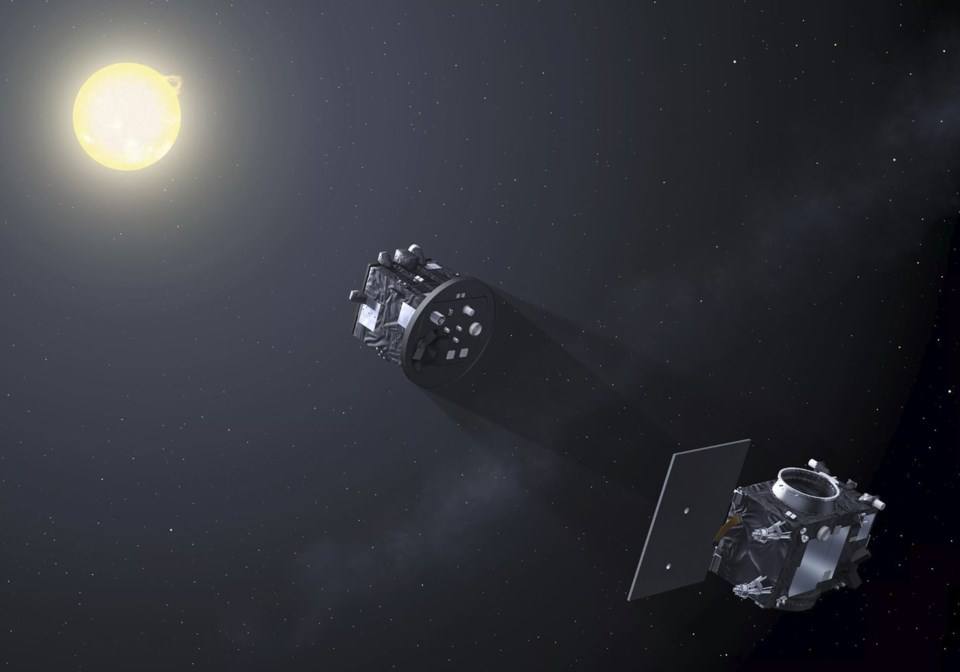CAPE CANAVERAL, Fla. (AP) — A pair of European satellites rocketed into orbit Thursday on the first mission to create artificial solar eclipses through fancy formation flying in space.
Each fake eclipse should last six hours once operations begin next year. That's considerably longer than the few minutes of totality offered by a natural eclipse here on Earth, allowing for prolonged study of the sun's corona, or outer atmosphere.
The launch took place from India.
Billed as a tech demo, the two satellites will separate in a month or so and fly 492 feet (150 meters) apart once reaching their destination high above Earth, lining up with the sun so that one spacecraft casts a shadow on the other.
This will require extreme precision, within just one millimeter, equivalent to a fingernail's thickness, according to the European Space Agency. To maintain their position, the satellites will rely on GPS, star trackers, lasers and radio links, flying autonomously.
Each cube-shaped spacecraft is less than 5 feet (1.5 meters) across. The shadow-casting satellite holds a disk to block the sun from the telescope on the other satellite. This disk will mimic the moon in a natural total solar eclipse, with the darkened satellite posing as Earth.
“This has a huge scientific relevance” in addition to testing high-precision formation flying,” said the European Space Agency’s technology and engineering director Dietmar Pilz.
Scientists need the glaring face of the sun completely blocked in order to scrutinize the wispy crown-like corona encircling it, getting an especially good look close to the solar rim on this mission. They're particularly interested to learn why the corona is hotter than the surface of the sun, and also want to better understand coronal mass ejections, eruptions of billions of tons of plasma with magnetic fields out into space.
The resulting geomagnetic storms can disrupt power and communication on Earth and in orbit. Such outbursts can also produce stunning auroras in unexpected places.
With a lopsided orbit stretching from 370 miles (600 kilometers) to 37,000 miles (60,000 kilometers) away, the satellites will take nearly 20 hours to circle the world. Six of those hours — at the farther end of the orbit — will be spent generating an eclipse. The first results should be available in March, following checkout of both craft, according to the space agency.
The $210 million mission, dubbed Proba-3, is expected to create hundreds of eclipses during its two-year operation. Once their job is done, both satellites will gradually drop lower until they burn up in the atmosphere, likely within five years.
Liftoff was delayed a day by a last-minute issue with the backup propulsion system of one of the satellites, crucial for precision formation flying. The European Space Agency said engineers relied on a computer software fix.
___
The Associated Press Health and Science Department receives support from the Howard Hughes Medical Institute’s Science and Educational Media Group. The AP is solely responsible for all content.
Marcia Dunn, The Associated Press

